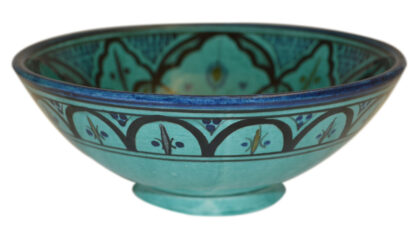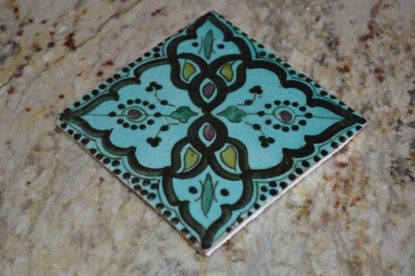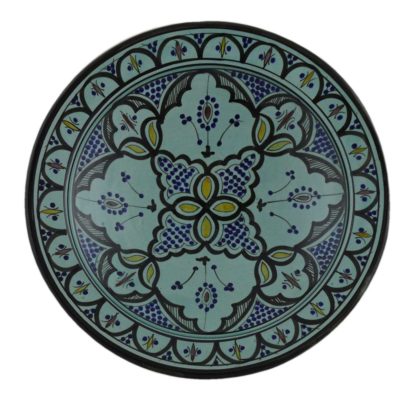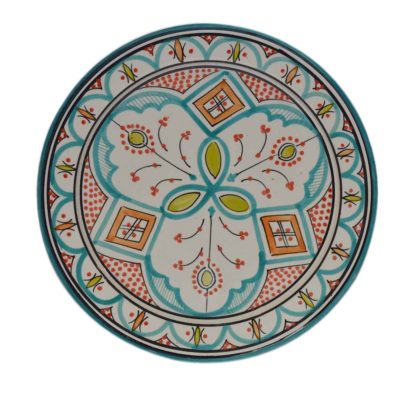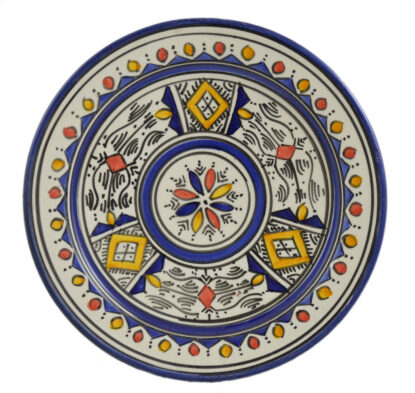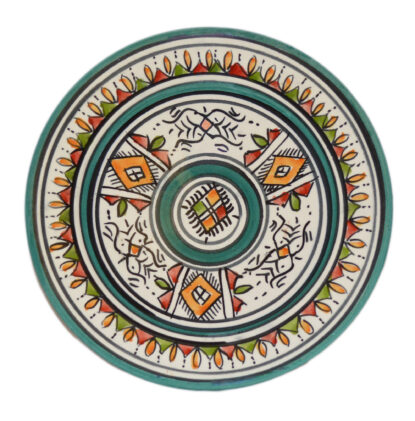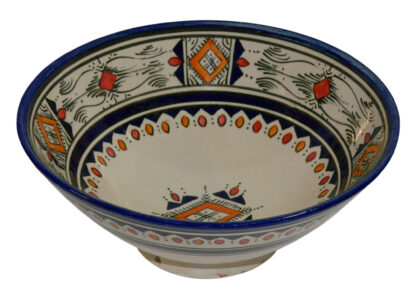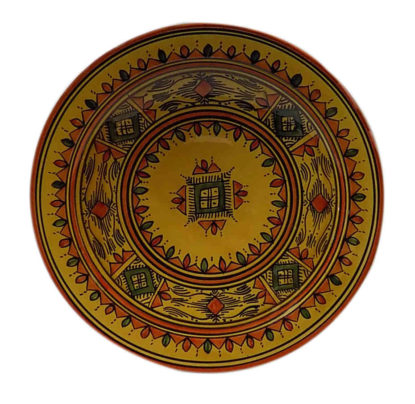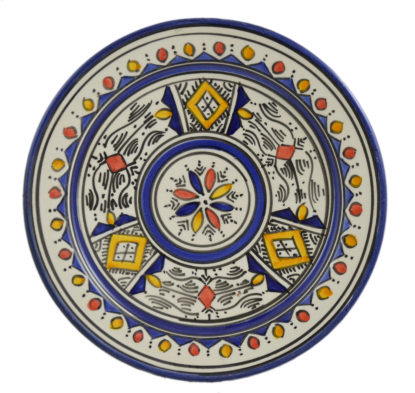Moroccan Ceramics
The ceramic art , among the world’s most ancient, occupy a special place in the realm of Moroccan crafts. the Arabs brought the persian practice of tiled ornamentation to Morocco. since then Morocco is very well-known for their wide range of ceramic pottery. All were hand painted with fine details, deep colors, and a variety of hand spun designs. The main centers for ceramics are Safi, which produces pottery inlaid with metal or covered tightly with leather, and Fes, which produces the very distinctive blue and white fassi pottery. Each ceramic masterpiece is filled with meaningful designs, styles and colors. Some of the pieces are trimmed with tooled silver overlay which gives a sort of richness to the design and adds to its uniqueness. In pottery making, the potter first works the clay on a spinning wheel. The process can take from ten minutes for an item like a bowl, to more than three hours for something as large as an urn. The molded clay is then set outside to dry. Large serving dishes and jugs are separated according to their kind. Once dry, the pottery is taken to the kiln. Once the ceramic wares have been fired, the decorative stage begins and designs are dependent upon the region where the pottery is produced. Some of the more traditional Berber tribes have patterns that they have been using for over 200 years. Then the pottery is fired again, where the paint used for decorating the pots, jugs, bowls, mugs, and tagines settles. By Alma Galvez
Showing 1–15 of 218 results
-
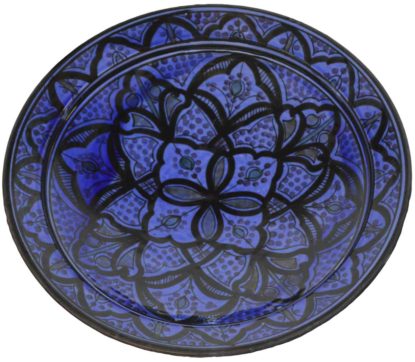
12 Inches Large Safi Blue Handmade Ceramic Serving Plate
$41.99 Add to cart -
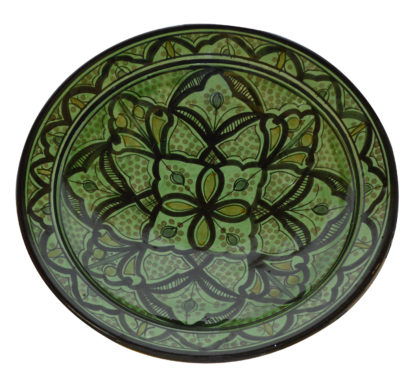
14 Inches Green Safi Handmade Ceramic Serving Plate
$46.99 Add to cart -
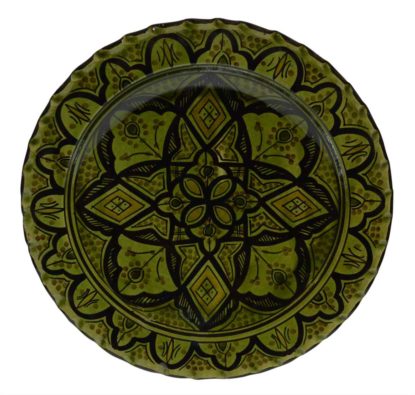
14 Inches Safi Green Handmade Ceramic Serving Plate
$46.99 Add to cart -
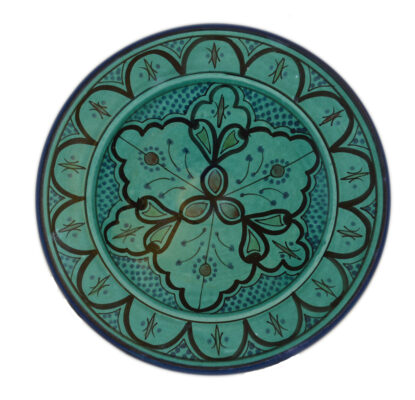
Aqua Ceramic Handmade Serving Plate Medium 10″
$36.99 Add to cart -
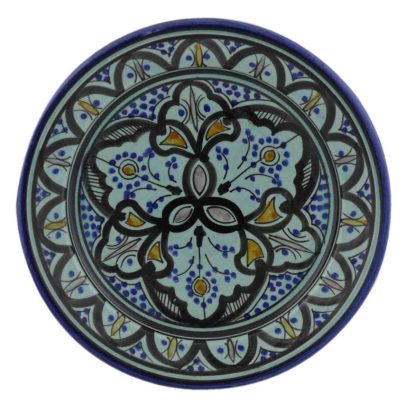
Aqua Ceramic Serving Plate Handmade 8″
$34.99 Add to cart -
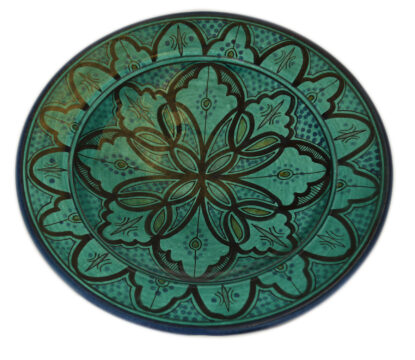
Aqua Dark Ceramic Serving Plate Handmade Large 12″
$41.99 Add to cart -
Aqua Handmade Serving Bowl Medium 10 inches
$36.99 Add to cart -
Aqua Handmade square tile
$12.99 Add to cart -
Aqua Serving Plate Handmade X-Large 14 inches
$46.99 Add to cart -
Aqua White Ceramic Serving Plate Handmade Large 12″
$41.99 Add to cart -
Berber Blue Ceramic Serving Plate Handmade 8″
$34.99 Add to cart -
Berber Green Ceramic Serving Plate Handmade 8″
$34.99 Add to cart -
Berber Multicolored Handmade Serving Bowl 12 inches Large
$49.99 Add to cart -
Berber Serving Plate Handmade X-Large 14 inches
$46.99 Add to cart -
Berber White & Blue Serving Plate Handmade X-Large 14 inches
$46.99 Add to cart
